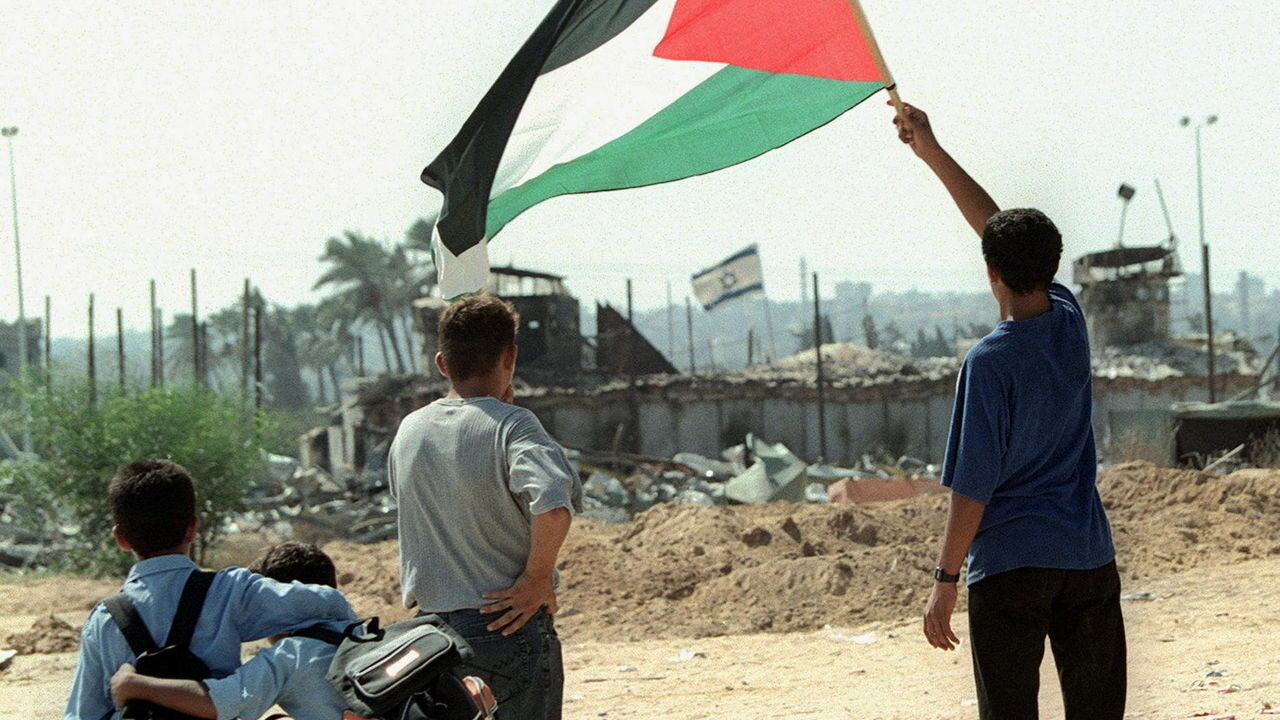A brief history

TEHRAN- With the war in Gaza becoming front and center around the world, many are now questioning the geography of the coastal strip, its history, and how Hamas came to power in this region. In this report, we intend to review the historical developments in Gaza in recent centuries, especially after the Zionist attack on Palestine.
Gaza, from Ottoman rule to the Oslo Accords
Gaza was part of the Ottoman Empire before World War I. After World War I and the collapse of the Ottoman Empire, France and England took control of the territories of the Turks under the League of Nations plan. In the Paris and London divisions, the lands of Palestine and Gaza came under British control. Gaza was administered by British forces from the 1920s to the 1940s until Jewish immigrants entered Palestine and began occupying the country's territories. Tens of thousands of Palestinians had to flee their ancestral lands during the Nakba and take shelter in neighboring regions, one of which was Gaza which later came under Egyptian control.
Israeli occupation of Gaza
After the Six-day War between Israel and Arabs and the heavy defeat of regional countries in 1967, the Israeli regime entered Gaza and occupied the strip. Gaza was officially under Israeli occupation until the early 1990s. During these years, the Zionists built many settlements there, leading to tensions between Muslims and Zionist Jews. The origin of the Palestinian uprising known as the "First Intifada" is Gaza. The first spark of the uprising was ignited by an incident where several Palestinian workers were crushed by an Israeli truck driver near the "Erez" wall. This event led to years of conflict between Palestinians and Israelis and eventually ended in 1993 after the signing of the Oslo Accords.
According to the Oslo Accords signed by the Zionist regime and the Palestinian Liberation Organization, Gaza was liberated from Israeli occupation and administered by Yasser Arafat's forces.
Fatah-Hamas conflicts
Although the Oslo Accords were signed in 1993, Israelis remained in Gaza until the end of the Second Intifada in 2005 and continued building settlements there. The settlements were evacuated as part of Israel's withdrawal from Gaza in 2005, and Fatah or the Palestinian Authority took full control of Gaza.
Fatah's rule in Gaza was short-lived. Just a year later, in 2006, Hamas, considered an opposition to Fatah, won parliamentary elections in Palestine and won a majority of seats. Mahmoud Abbas, head of the Palestinian Authority, appointed Ismail Haniyeh, the Hamas leader, as Prime Minister, but disagreements between the two escalated so much that Abbas dismissed Haniyeh from his position. In Gaza, a short war broke out between Hamas and Fatah. At the end of the war, the southwestern coast fell to Fatah or the Palestinian Authority, and Gaza also fell into Hamas's hands, with Ismail Haniyeh and his party officially taking power in Gaza.
The era of resistance
From 2006 to date, Hamas has been considered the main power in Gaza and has enjoyed rising popularity throughout the years compared to the Palestinian Authority, which is seen as an Israel lackey in the West Bank. Since Hamas took control, Gaza has been under Israeli and Egyptian land, sea, and air blockade. On the other hand, Israel has built numerous settlements near Gaza since 2006 and has practically besieged this area. The tight Israeli blockade prevents free entry or exit of people and goods. These events have raised tensions between Israel and Gaza and led to various conflicts. From 2006 to date, Israel has launched multiple brutal wars on Gaza.
December 2008- January 2009: Israel’s first round of devastating onslaughts on Gaza begins on December 27, 2008, and lasts for three weeks, ending on January 18, 2009. The war is marked by intense airstrikes, ground operations, and naval attacks by Israeli forces. The conflict results in heavy civilian casualties in Gaza, with estimates suggesting around 1,400 Palestinians killed, including many civilians, women, and children.
November 2012: Israel targets and eliminates Hamas' military commander, Ahmad Jabari, triggering eight days of Israeli airstrikes on Palestinian territories.
July-August 2014: The capture of three Israeli settlers by Hamas sparks a seven-week-long conflict, resulting in the deaths of over 2,100 Palestinians in Gaza and 73 Israelis, among whom 67 soldiers.
March 2018: Palestinian demonstrations kick off at Gaza's fortified border with Israel, leading to Israeli forces opening fire to control the crowds. Over 170 Palestinians lose their lives during the protests over several months, sparking clashes between Hamas and Israeli military forces.
May 2021: Following weeks of tension during Ramadan, a large number of Palestinians sustain injuries from Israeli security forces at the Al-Aqsa Mosque compound in the occupied al-Quds. Hamas calls for the removal of Israeli security forces from the compound. In response to alleged rocket launches from Gaza, Israel conducts airstrikes on the strip. The ensuing conflict lasts for 11 days, resulting in a death toll of at least 260 in Gaza and 13 in Israel.
August 2022: Israeli planes carry out new air strikes, claiming the lives of over 30 Palestinians, including women and children. In retaliation, Palestinian Islamic Jihad launches numerous rockets into Israel after two of its commanders are killed in the airstrikes.
October 2023: Israel launches a genocidal war on Gaza after Hamas carries out the Al-Aqsa Storm Operation inside the occupied territories on October 7th. The offensive which is still ongoing has been described as the most destructive war of the 21st century, so far resulting in the death of over 30,000 civilians.
Leave a Comment